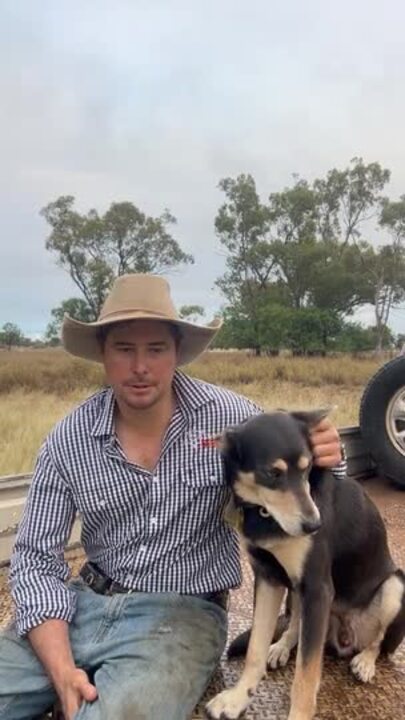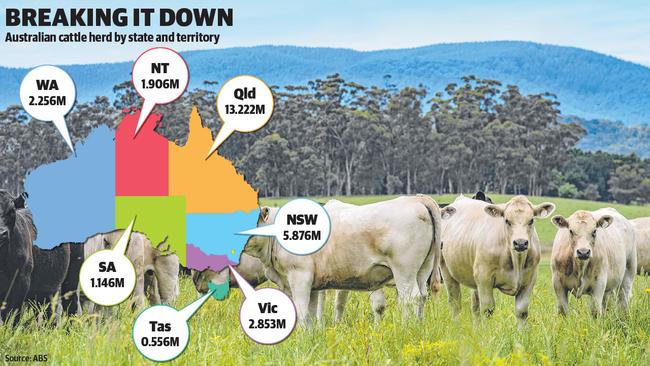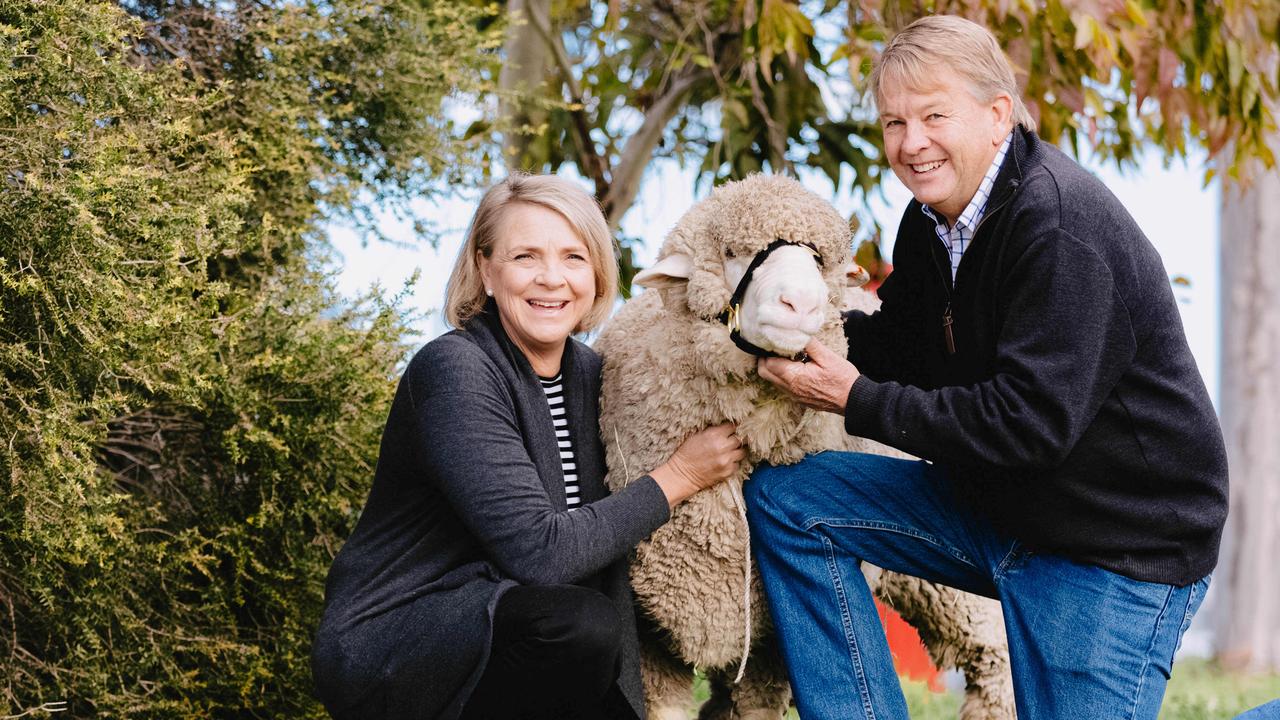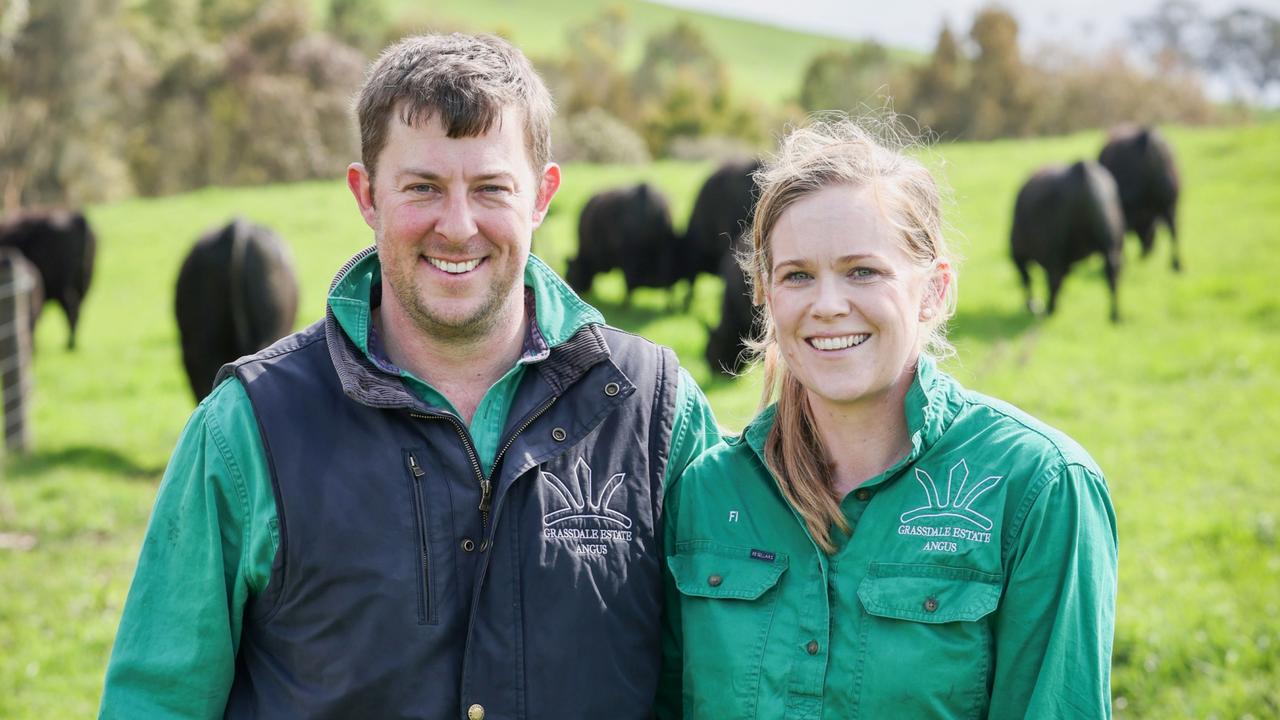Good seasons keep national herd growth on the rise
The national cattle herd has risen on the back of favourable seasonal conditions and producer intention. See the state-by-state breakdown.

The national cattle herd has continued to increase in the past couple of years, as the seasons have been more favourable.
But with some regions experiencing drier conditions this year, numbers may be set to fall in some areas.
Figures from the Australian Bureau of Statistics for the 2022-23 financial year, the latest official data available, show there were an estimated 27.8 million beef cattle on farms as at June 30, 2023 – an increase of 4.6 per cent from 2022 due to favourable seasonal conditions.
Queensland continues to have the largest cattle herd, with numbers increasing 4.2 per cent to 13.2 million head in 2022-23, while in NSW numbers were up 6.2 per cent to 5.9 million and in Victoria they increased 5 per cent to 2.9 million cattle.
Breaking down the figures by state shows:
NSW: In 2023 there were 5.87m beef cattle, compared to 5.53m in 2022 and almost 1 million more than the herd in 2019 when it was at 4.87m.
VICTORIA: In 2023 there were 2.85m beef cattle, compared to 2.71m in 2022 and 2.62m in 2019.
QUEENSLAND: In 2023 there were 13.22m cattle, up from 12.69m in 2022 and 13m in 2019.
SOUTH AUSTRALIA: In 2023 there were 1.14m cattle, up from 1.09m in 2022 and 1.01m in 2019.
WESTERN AUSTRALIA: In 2023 there were 2.25m cattle, up from 2.16m in 2022 and 2.13m in 2019.
TASMANIA: In 2023 there were 556,000 cattle, up from 523,000 in 2022 and 507,000 in 2019.
NORTHERN TERRITORY: In 2023 there were 1.9m up from 1.86m in 2022 and down from 2.42m in 2019.

The statistics show the local value of livestock disposals decreased 1 per cent to $23.3 billion in 2022-23.
According to ABS lower rainfall through the early stages of 2023 reduced producer confidence, resulting in volatile market conditions and affecting prices for red meat throughout the second half of the year.
In 2022-23, the value of cattle and calves slaughtered increased 13.8 per cent to $3.6 billion, this compares to $3.2bn in June 2023.
In April 2024 Meat and Livestock Australia released its Beef Producer Intention Survey, which focused on measuring some of the demographics of Australia’s herd.
That survey found there are just over 26 million adult grass-fed beef cattle on hand across the country.
Southern Australia makes up approximately 55 per cent of the total estimated on-farm grass-fed adult beef cattle herd size, while northern Australia accounts for the remaining 45 per cent.
Queensland accounts for almost half the herd size at 48 per cent, with NSW 20 per cent and the remaining states making up the balance.
Meat and Livestock Australia manager for market information Stephen Bignell said the survey showed there was a net intention to increase the on-farm grass-fed adult beef cattle herd in the next 12 months.
“While the results do not indicate producers have all shifted to a rebuild focus, there has been a noticeable shift away from herd reductions at this stage.”
The season being experienced in each state had a direct impact on producers’ intentions.
The survey showed producers in NSW and Queensland were more likely to report an intention to increase their herd size than producers from other states.
And producers in Western Australia and South Australia were less likely to report an intention to increase their herd size
“The results are consistent with the sentiment and outlook producers have. A more positive outlook is typically correlated with an intention to grow,” Mr Bignell said.
Meanwhile, as winter continued to be dry in many southern areas, there is new ABS data showing the herd could be heading into a liquidation phase.
ABS quarterly livestock slaughter data, which measures the female slaughter ratio, an indicator of whether we are in herd rebuild or herd liquidation phase, shows the FSR is at 53.1 per cent for the June quarter.
This is up from the 47 per cent FSR in the March 2024 quarter.
Episode3 director and analyst Matt Dalgleish said measuring the FSR on an annual average basis now puts the 2024 average FSR at 50.8 per cent.
“The last time the annual average FSR was at similar annual levels was in 2014 and 2018 at 50.6 per cent and 50.8 per cent, respectively. In 2014 the herd declined by 0.3 per cent.”





